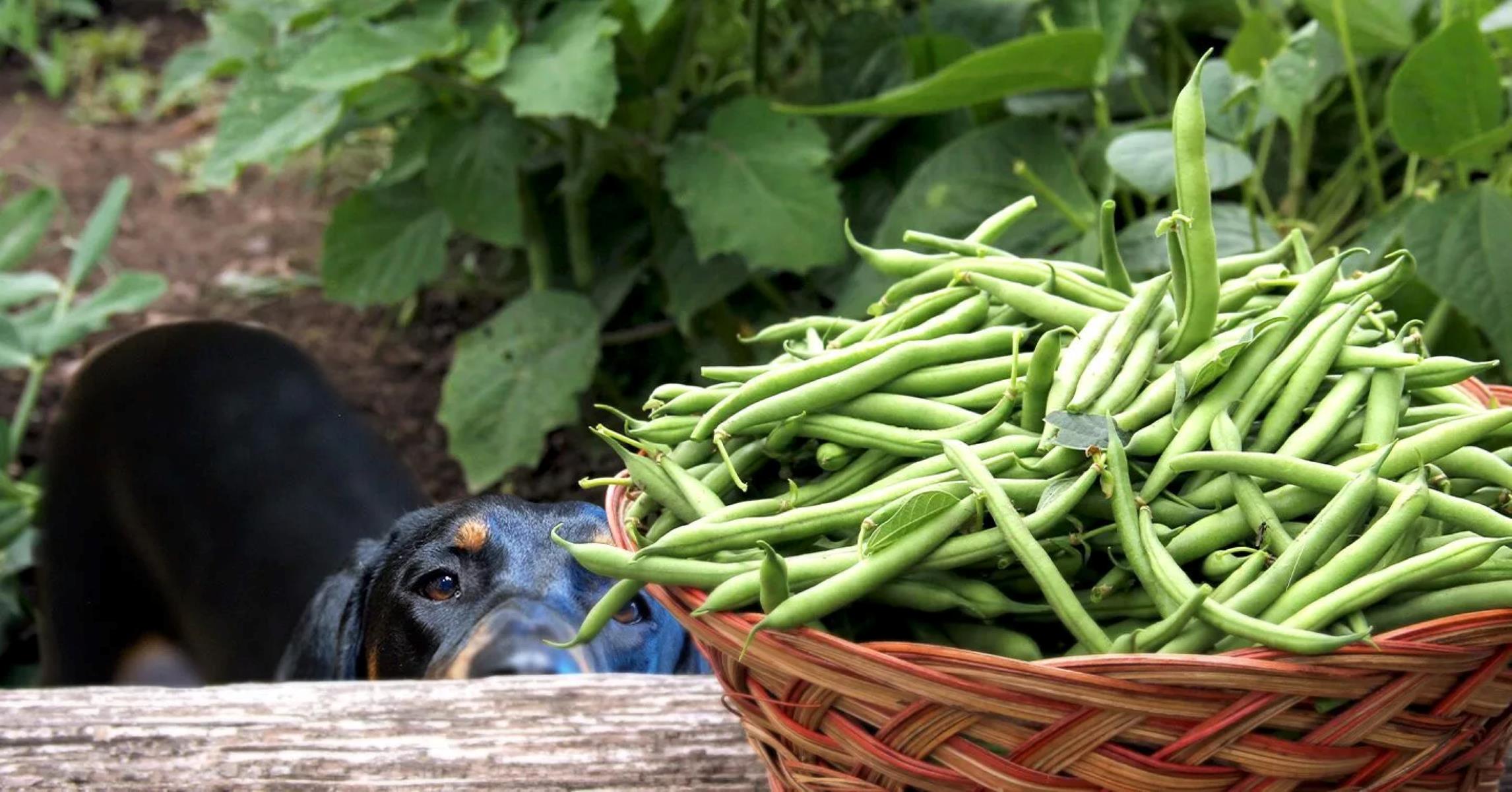Home>Food and Cooking>Unleash Your Culinary Creativity: Discover The Perfect Liquid Smoke Alternative For Your Recipes!


Food and Cooking
Unleash Your Culinary Creativity: Discover The Perfect Liquid Smoke Alternative For Your Recipes!
Published: January 12, 2024
Unleash your culinary creativity with the perfect liquid smoke alternative for your recipes. Elevate your food and cooking with this game-changing ingredient!
(Many of the links in this article redirect to a specific reviewed product. Your purchase of these products through affiliate links helps to generate commission for Regretless.com, at no extra cost. Learn more)
Table of Contents
Introduction
Are you an adventurous cook constantly seeking new ways to elevate your dishes? Do you take pride in crafting delectable meals that tantalize the taste buds of your loved ones? If so, you understand the importance of infusing rich, smoky flavors into your culinary creations. One popular method for achieving this is by incorporating liquid smoke into your recipes. However, what if you're looking for a more natural and authentic alternative to this widely used product?
In this comprehensive guide, we'll delve into the world of liquid smoke and its drawbacks, and then embark on an exciting exploration of natural alternatives. Whether you're a seasoned chef or an enthusiastic home cook, you'll discover a myriad of innovative ways to infuse your dishes with the alluring essence of smoke. From exploring smoked ingredients to uncovering the perfect liquid smoke alternative, this journey promises to ignite your culinary creativity and inspire a newfound appreciation for the art of cooking.
So, fasten your apron strings and get ready to embark on a flavorful adventure as we unveil the secrets to enhancing your dishes with the perfect smoky essence!
Understanding Liquid Smoke
Liquid smoke is a concentrated solution created by capturing and condensing the smoke produced during the burning of wood. This process results in a potent liquid that encapsulates the distinct smoky flavor and aroma of the wood used in the smoking process. The liquid is commonly utilized to impart a smoky essence to a wide array of dishes, ranging from meats and marinades to sauces and even vegetarian fare.
The production of liquid smoke typically involves two primary methods: the direct and indirect methods. In the direct method, wood chips or sawdust are burned, and the smoke is passed through a condenser to yield the liquid form. Conversely, the indirect method involves the collection of smoke from a controlled combustion chamber, followed by condensation to produce the concentrated liquid.
Liquid smoke offers a convenient and consistent way to infuse dishes with a smoky flavor, regardless of the cooking method employed. Whether grilling, roasting, or simmering, a few drops of liquid smoke can impart a delightful smokiness to the dish. Furthermore, liquid smoke provides a practical solution for individuals who may not have access to traditional smoking equipment or outdoor space for smoking foods.
It's important to note that liquid smoke comes in various flavors, each corresponding to the type of wood used in the smoking process. Common wood varieties utilized for smoking and subsequently captured in liquid smoke include hickory, mesquite, applewood, and pecan. Each imparts a unique flavor profile, allowing for versatility in culinary applications.
While liquid smoke offers undeniable convenience and consistency, it's important to be mindful of its drawbacks, particularly in terms of its synthetic nature and potential health concerns. As we continue our exploration, we'll delve deeper into the limitations of liquid smoke and unveil natural alternatives that can elevate your culinary creations to new heights.
The Drawbacks of Liquid Smoke
While liquid smoke offers undeniable convenience and versatility in the kitchen, it is not without its drawbacks. Understanding these limitations is crucial for those seeking a more natural and authentic approach to infusing smoky flavors into their dishes.
One of the primary concerns associated with liquid smoke is its synthetic nature. Despite being derived from natural wood smoke, the condensation and concentration process involved in creating liquid smoke often result in a product that contains additives and preservatives. These additional components may include artificial colors, flavor enhancers, and stabilizers, which can detract from the purity of the smoky essence and introduce unwanted elements into your culinary creations.
Furthermore, the potential health implications of consuming liquid smoke have raised concerns among health-conscious individuals and culinary experts alike. Some studies have suggested that certain compounds present in liquid smoke, such as polycyclic aromatic hydrocarbons (PAHs), may pose health risks when consumed in excessive amounts. PAHs are formed during the incomplete combustion of organic materials, including wood, and their presence in liquid smoke has prompted discussions about their potential carcinogenic effects.
In addition to the synthetic and health-related concerns, the flavor profile of liquid smoke, while consistent, may lack the depth and complexity associated with traditional smoking methods. The concentrated nature of liquid smoke can sometimes result in an overpowering or artificial smokiness, which may not align with the nuanced flavors achieved through traditional smoking techniques.
Moreover, for purists and aficionados of authentic barbecue and smoked foods, the use of liquid smoke may be perceived as a shortcut that compromises the traditional art of smoking and the rich heritage associated with it. The craft of smoking foods over wood-fired pits or smokers is deeply rooted in culinary traditions and holds cultural significance in various regions, making liquid smoke a contentious topic among purists.
Despite these drawbacks, it's important to recognize that liquid smoke has its merits and can be a valuable tool in the culinary repertoire. However, for those seeking a more natural and nuanced approach to infusing smoky flavors into their dishes, exploring natural alternatives and traditional smoking methods may offer a more satisfying and authentic culinary experience.
Exploring Natural Alternatives
As we navigate the culinary landscape in search of natural alternatives to liquid smoke, we embark on a journey that celebrates the authenticity and depth of flavor derived from traditional smoking methods and natural ingredients. Embracing natural alternatives not only offers a more wholesome approach to infusing smoky essences into our dishes but also allows us to explore a diverse array of ingredients and techniques that honor the art of smoking.
1. Smoked Salt and Spices
One of the simplest and most versatile natural alternatives to liquid smoke is smoked salt. This exquisite seasoning is crafted through the process of cold-smoking coarse salt over wood fires, resulting in a delicately infused smokiness that enhances a myriad of dishes. Whether sprinkled over grilled vegetables, incorporated into rubs for meats, or used to elevate the flavor of dips and sauces, smoked salt imparts a nuanced smoky essence that harmonizes with a wide range of culinary creations. Additionally, exploring smoked spices such as paprika, cumin, and black pepper provides an opportunity to infuse dishes with distinctive smoky undertones, adding depth and complexity to every bite.
Read more: Unleash Your Creativity With FYBIT!
2. Smoking with Wood Chips
For those seeking a hands-on approach to infusing smoky flavors, utilizing wood chips for stovetop or outdoor smoking presents an enriching and aromatic experience. By selecting high-quality wood chips such as hickory, mesquite, or fruitwoods, and pairing them with the appropriate ingredients, one can achieve a level of control and artistry that transcends the uniformity of liquid smoke. Whether smoking meats, vegetables, or cheeses, the process of gently coaxing the essence of wood smoke into culinary creations fosters a deep connection to the time-honored tradition of smoking foods.
3. Charcoal Grilling and Wood-Fired Cooking
Exploring the realm of charcoal grilling and wood-fired cooking unveils a realm of smoky possibilities that transcend the limitations of liquid smoke. The act of grilling over charcoal or wood fires imparts a primal smokiness that elevates the flavors of foods in a distinctive and authentic manner. Whether searing steaks over hot coals, slow-roasting vegetables in a wood-fired oven, or imparting a kiss of smoke to artisanal pizzas, the elemental charm of cooking with live fire imparts a soulful smokiness that resonates with culinary enthusiasts.
4. Infusing Oils and Vinegars
Another captivating avenue for infusing dishes with natural smokiness involves creating smoked oils and vinegars. By gently infusing high-quality oils such as olive oil or sesame oil with smoky elements using cold-smoking techniques, one can craft aromatic elixirs that enhance dressings, marinades, and drizzles with a subtle yet captivating smokiness. Similarly, smoked vinegars offer a tangy and nuanced dimension to dishes, providing a delightful balance of acidity and smoky depth that elevates salads, sauces, and marinades.
As we immerse ourselves in the realm of natural alternatives to liquid smoke, we uncover a tapestry of smoky essences that celebrate the artistry and authenticity of traditional smoking methods and natural ingredients. By embracing smoked salts, spices, wood chips, live fire cooking, and infused oils and vinegars, we honor the rich heritage of smoking while infusing our culinary creations with an unparalleled depth of flavor.
This comprehensive exploration of natural alternatives invites us to unleash our culinary creativity and embark on a flavorful journey that celebrates the timeless allure of smoky essences in the art of cooking.
Using Smoked Ingredients
Incorporating smoked ingredients into culinary creations is a captivating and versatile approach that infuses dishes with a rich and complex smokiness. From meats and seafood to vegetables and dairy products, smoked ingredients offer a myriad of opportunities to elevate flavors and add depth to a wide range of dishes.
1. Smoked Meats and Seafood
The allure of smoked meats and seafood lies in their ability to impart a robust and savory smokiness that enhances the overall flavor profile of a dish. Whether it's succulent smoked brisket, tender smoked salmon, or delicately smoked oysters, the art of smoking meats and seafood yields delectable results. The slow and methodical process of smoking allows the essence of wood smoke to permeate the ingredients, resulting in a harmonious marriage of smoky, savory, and often subtly sweet flavors. These smoked delicacies serve as compelling centerpieces or versatile ingredients in a wide array of culinary creations.
2. Smoked Vegetables and Fruits
Exploring the realm of smoked vegetables and fruits opens a gateway to a world of unexpected and tantalizing flavors. From smoky grilled eggplant and charred bell peppers to caramelized smoked peaches and grilled pineapple, the process of smoking imparts a transformative essence that elevates the natural sweetness and earthy notes of produce. The gentle infusion of smokiness adds depth and complexity to vegetarian and vegan dishes, offering a delightful contrast to the inherent freshness of the ingredients.
3. Smoked Dairy and Cheese
The marriage of smokiness and dairy products, particularly cheese, yields a captivating symphony of flavors that captivate the palate. Smoked cheeses such as gouda, cheddar, and mozzarella offer a tantalizing combination of creamy textures and nuanced smokiness. Whether enjoyed on a charcuterie board, melted into gourmet grilled cheese sandwiches, or incorporated into savory tarts and quiches, smoked cheeses add a layer of sophistication and depth to culinary creations. Additionally, the process of smoking butter and cream infuses these dairy staples with a delicate smokiness, transforming them into luxurious ingredients for sauces, spreads, and baked goods.
4. Smoked Grains and Legumes
Embracing the concept of smoked grains and legumes introduces a captivating dimension to staple ingredients in various cuisines. From smoked quinoa and farro to hickory-smoked black beans and lentils, the infusion of smoky essences into grains and legumes imparts a rustic and aromatic quality to dishes. These smoked elements serve as a foundation for hearty grain bowls, robust stews, and inventive side dishes, adding a layer of depth and complexity to every bite.
Incorporating smoked ingredients into culinary creations offers a dynamic and flavorful approach to infusing dishes with a captivating smokiness. Whether it's the savory allure of smoked meats and seafood, the unexpected charm of smoked vegetables and fruits, the indulgent richness of smoked dairy and cheese, or the rustic appeal of smoked grains and legumes, the art of utilizing smoked ingredients presents a world of culinary possibilities that celebrate the timeless allure of smoky essences in cooking.
Read more: Unleash Your Creativity: The Perfect Combination Of Wella Bleach And Color Tango Developer!
Conclusion
In the realm of culinary exploration, the quest for infusing dishes with the alluring essence of smoke transcends mere flavor enhancement; it embodies a celebration of tradition, creativity, and authenticity. As we conclude our flavorful journey, we emerge with a profound appreciation for the art of infusing smokiness into culinary creations.
Our exploration of liquid smoke and its drawbacks has illuminated the complexities and considerations surrounding this convenient yet synthetic product. While liquid smoke offers practicality and consistency, its synthetic nature and potential health concerns underscore the value of seeking natural alternatives and embracing traditional smoking methods.
The discovery of natural alternatives to liquid smoke has unveiled a tapestry of smoky essences that honor the authenticity and depth of flavor derived from traditional smoking methods and natural ingredients. From the versatility of smoked salts and spices to the elemental charm of wood-fired cooking, each natural alternative offers a nuanced and wholesome approach to infusing dishes with captivating smokiness.
Furthermore, the utilization of smoked ingredients has opened a gateway to a world of unexpected and tantalizing flavors, enriching culinary creations with the robust and savory essence of smoked meats and seafood, the transformative allure of smoked vegetables and fruits, the captivating symphony of smoked dairy and cheese, and the rustic appeal of smoked grains and legumes.
As we reflect on this culinary odyssey, we are reminded that the pursuit of the perfect liquid smoke alternative is not merely a quest for flavor, but a celebration of tradition, creativity, and authenticity. Whether embracing natural alternatives, exploring traditional smoking methods, or incorporating smoked ingredients, the art of infusing dishes with smoky essences invites us to unleash our culinary creativity and embark on a flavorful journey that celebrates the timeless allure of smoke in the art of cooking.
In essence, the perfect liquid smoke alternative transcends the confines of convenience; it embodies a reverence for tradition, a celebration of natural flavors, and a testament to the artistry of infusing dishes with the captivating essence of smoke. As we continue to explore the rich tapestry of culinary possibilities, let us embrace the smoky allure that enriches our creations and elevates our culinary experiences to new heights.












